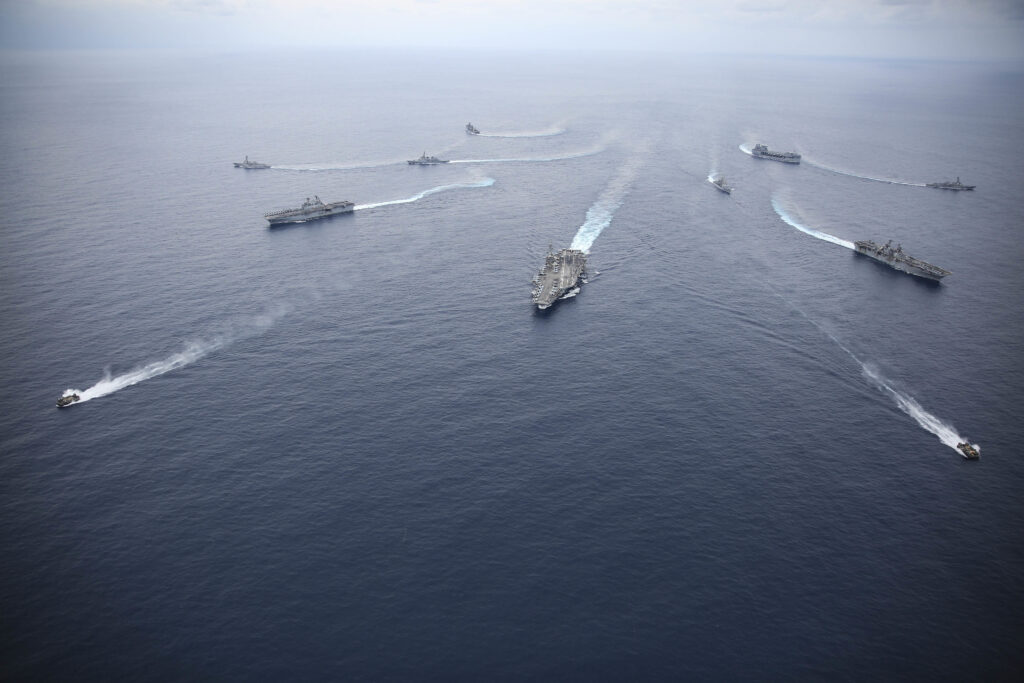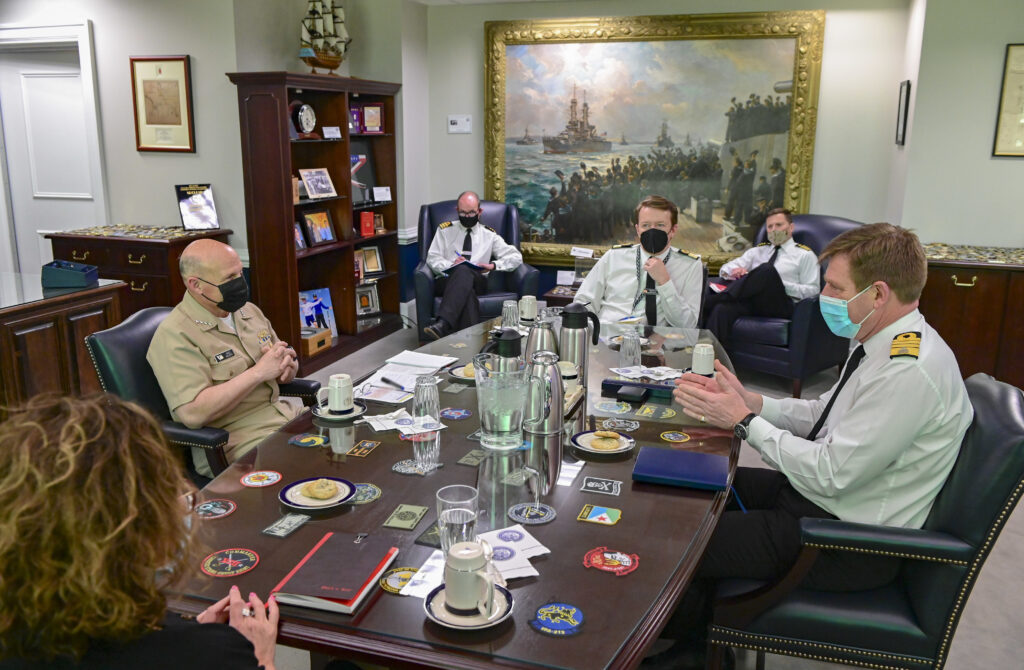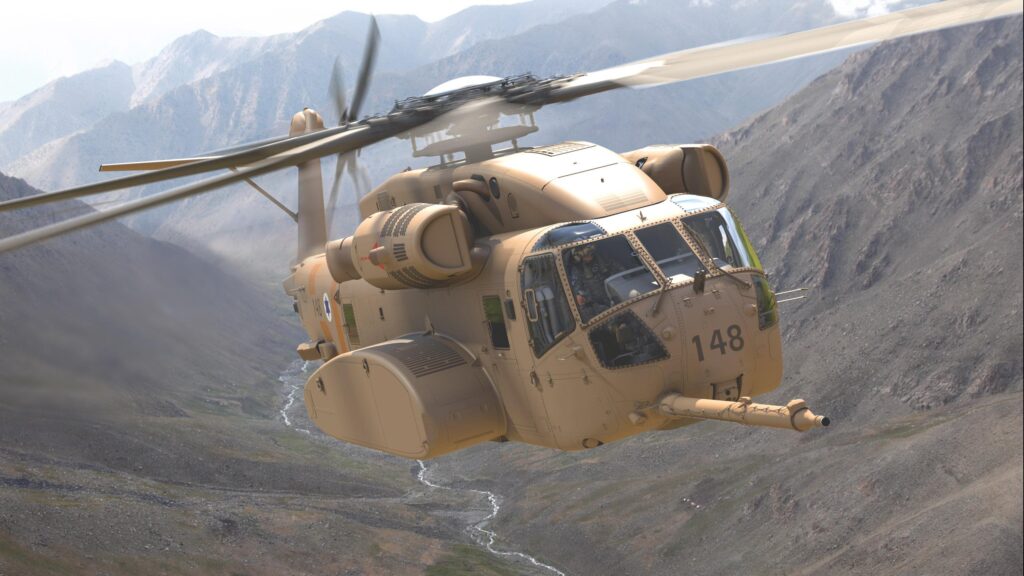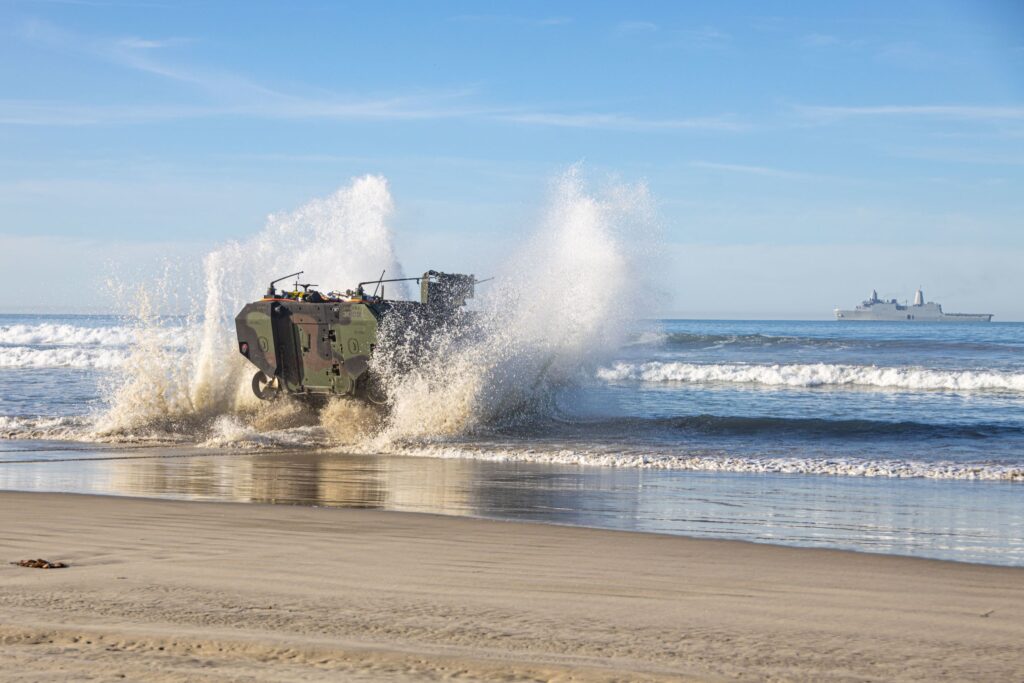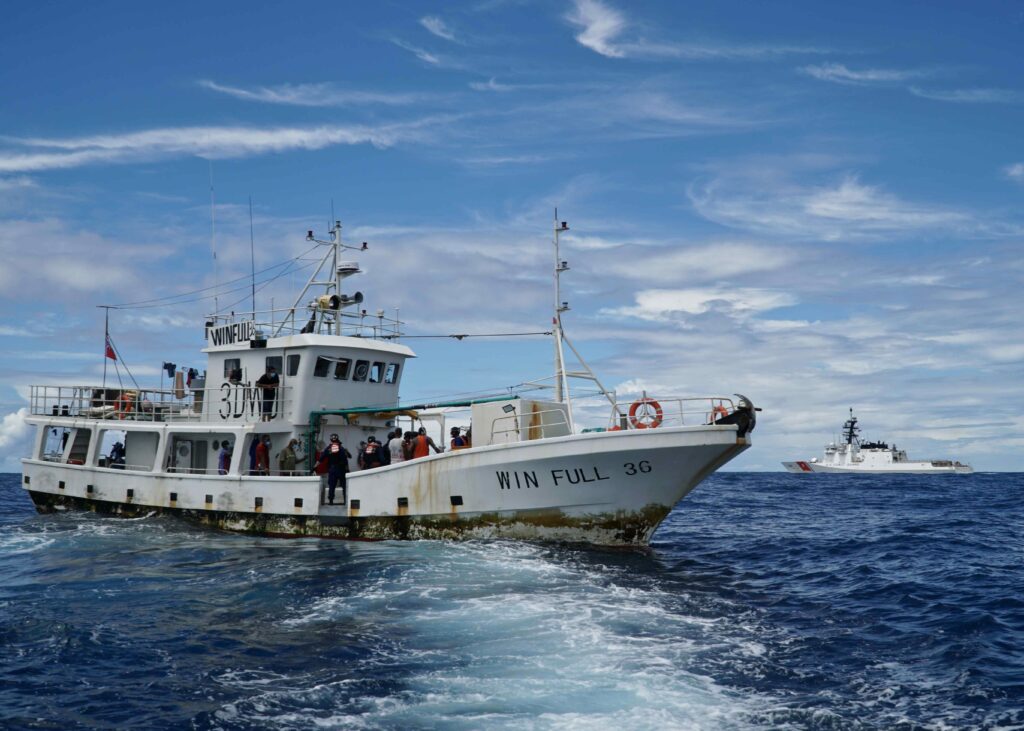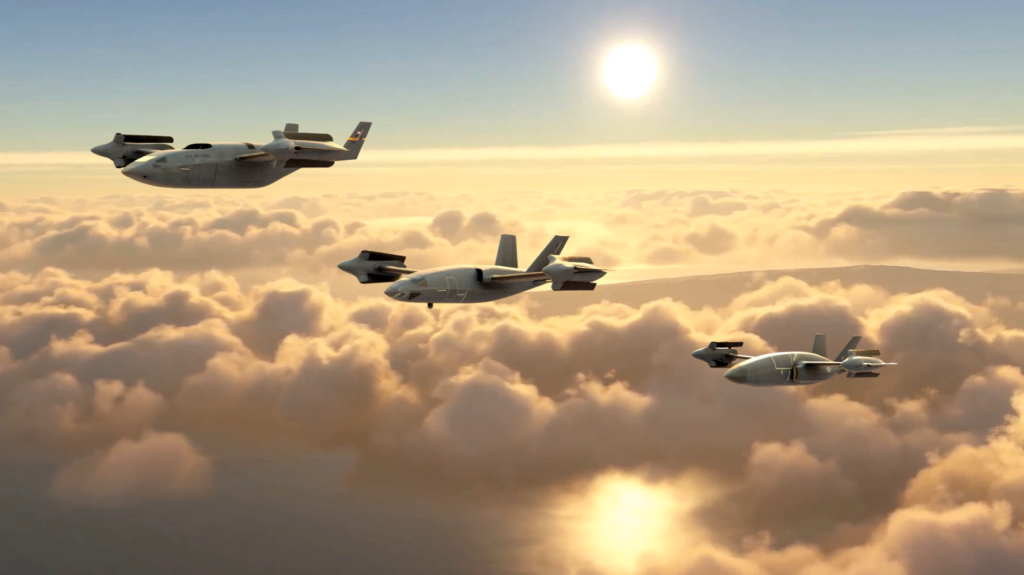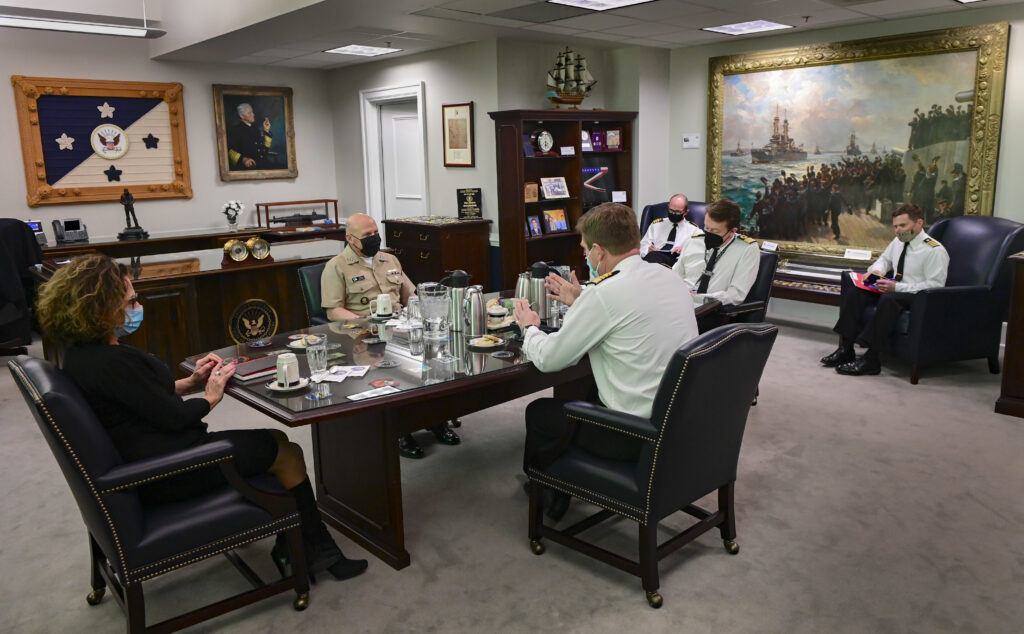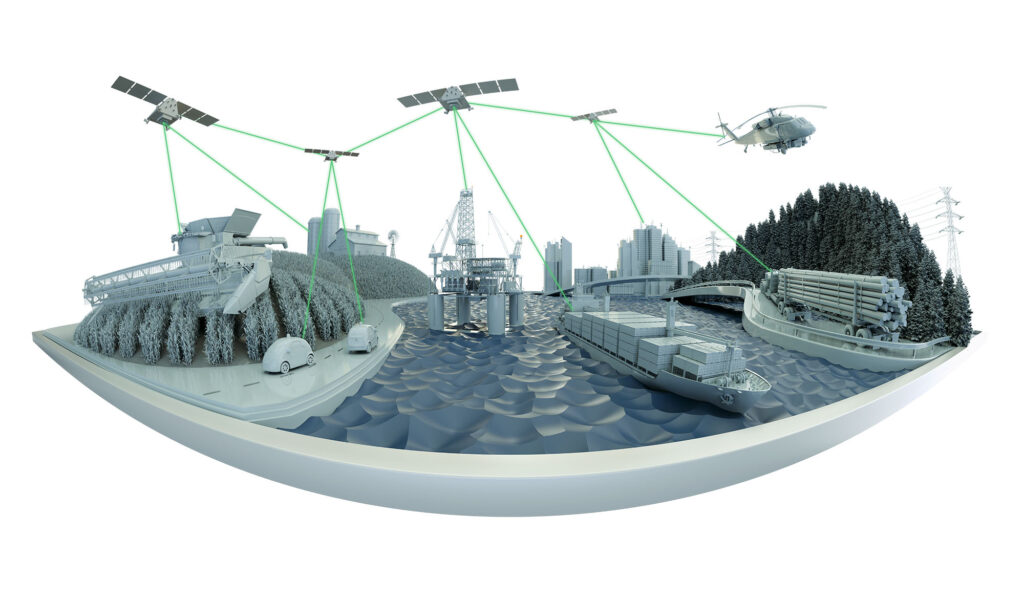Marine General: Exercises Don’t Pressure-Test Logistics for Real-World Operations
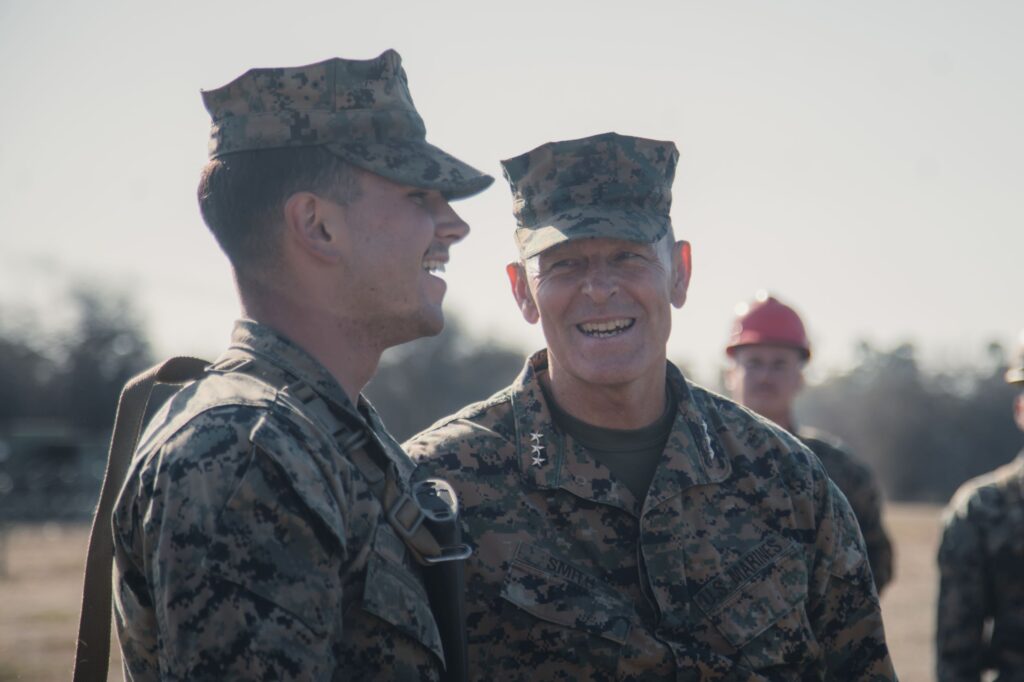
ARLINGTON, Va. — A Marine Corps general who commands one of the Corps’ three Marine expeditionary forces said logistics does not get a realistic challenge when military exercises are executed, primarily because of the short duration of the exercises.
“When I focus on a particular concern, I would offer that we’re not placing enough emphasis on logistics, and particularly logistics in a distributed and contested maritime environment,” said Lt. Gen. George Smith, commander of the I MEF, based in California, speaking on a panel of the West2022 conference sponsored by the U.S. Naval Institute and the Armed Forces Communications and Electronics Association.
“I say that because it [logistics] is hard to exercise,” Smith said. “Exercises truly aren’t long enough to truly exercise and pressure-test logistics. In the war games that I’ve participated in, far too often forces are where they ideally would like to be with a whole bunch of sustainment piled up. The war games don’t last long-enough to test logistics.”
Smith said “logistics is undoubtedly the pacing function when we talk about operations in the Pacific. When you look at the vast expanse of the Pacific, and all the attendant challenges, logistics is going to be that pacing function. So, as I MEF looks to shifting to the Pacific and get west of the IDL [International Date Line], our logistics team is looking really hard at updating and developing logistics nodes and distribution sites and looking at a whole new prepositioning constructs for the MEF so that we can seamlessly and effectively transition from competition steady-state campaigning to conflict. Without logistics, without that sustainment, we will not be able to do that.
“It must nest within INDO-PACOM’s [U.S. Indo-Pacific Command’s] larger logistics posture and I would add that we’re working hard to reduce what is already a strained TRANSCOM [U.S. Transportation Command] capacity and what the expectations of the joint force are,” he said.
Smith said the Corps is looking how to “bridge the gap of theater to operational to tactical logistics, often referred to as the last tactical mile,” which he said logisticians call the “‘last logistical mile.’”
The I MEF commander said his command would team with the Marine Corps Warfighting Lab to bring a stern-[ramp] landing vessel to the U.S. West Coast to exercise “as part of exercising that last tactical mile, that last logistics mile.”
Smith said exercising with the vessel “would help us in our future operating concepts to deliver that logistics to the warfighter in these distributed locations.”
The Navy is developing two new classes of ships to support Distributed Maritime Operations and Expeditionary Advance Base Operations. The light amphibious warship is being designed to support Marine littoral regiments and other forces and will have bow ramp for discharging personnel and vehicles on a shore. The next-generation logistics ship will be smaller and less expensive than the Combat Logistics Force’s replenishment ships.
